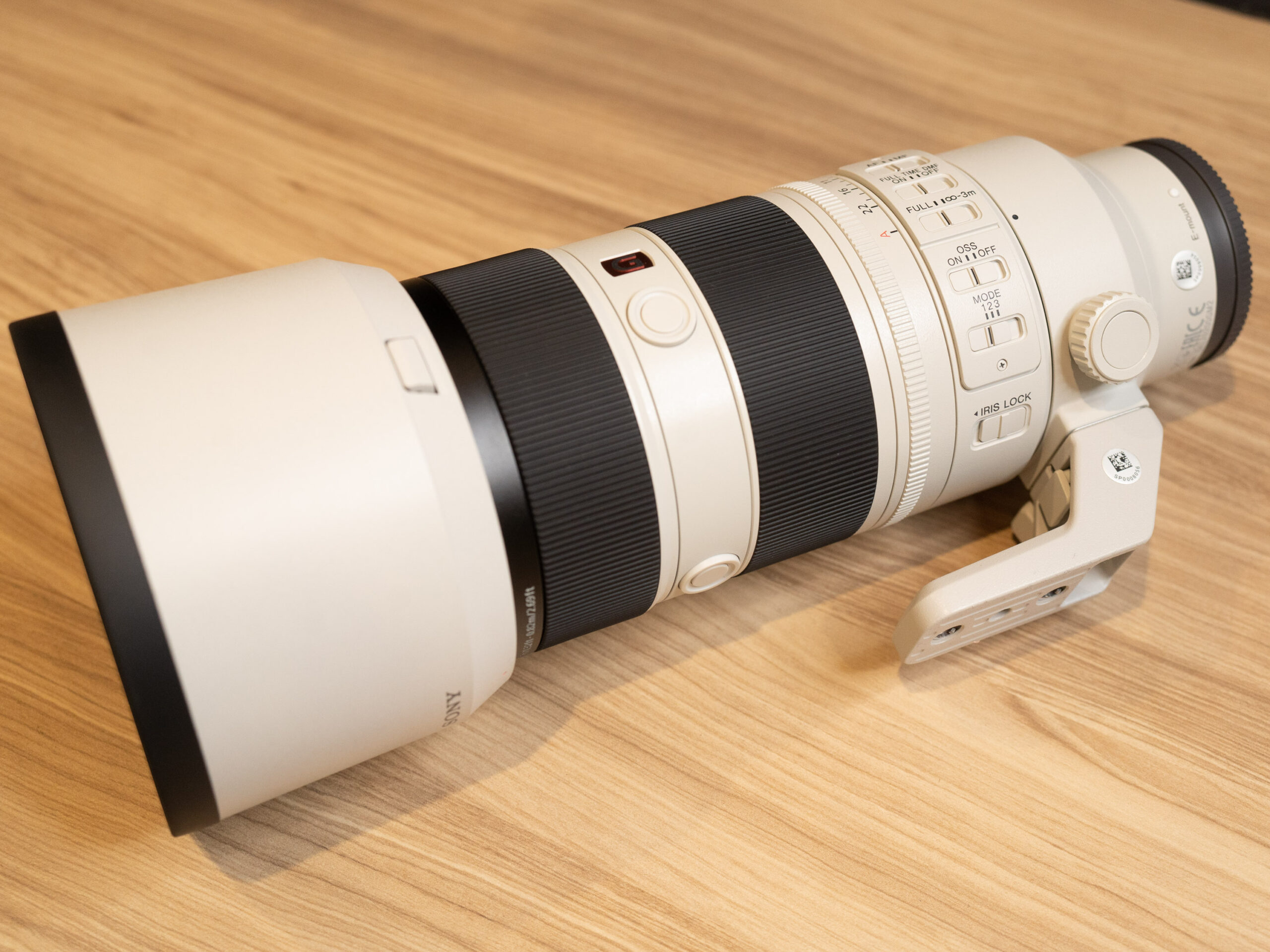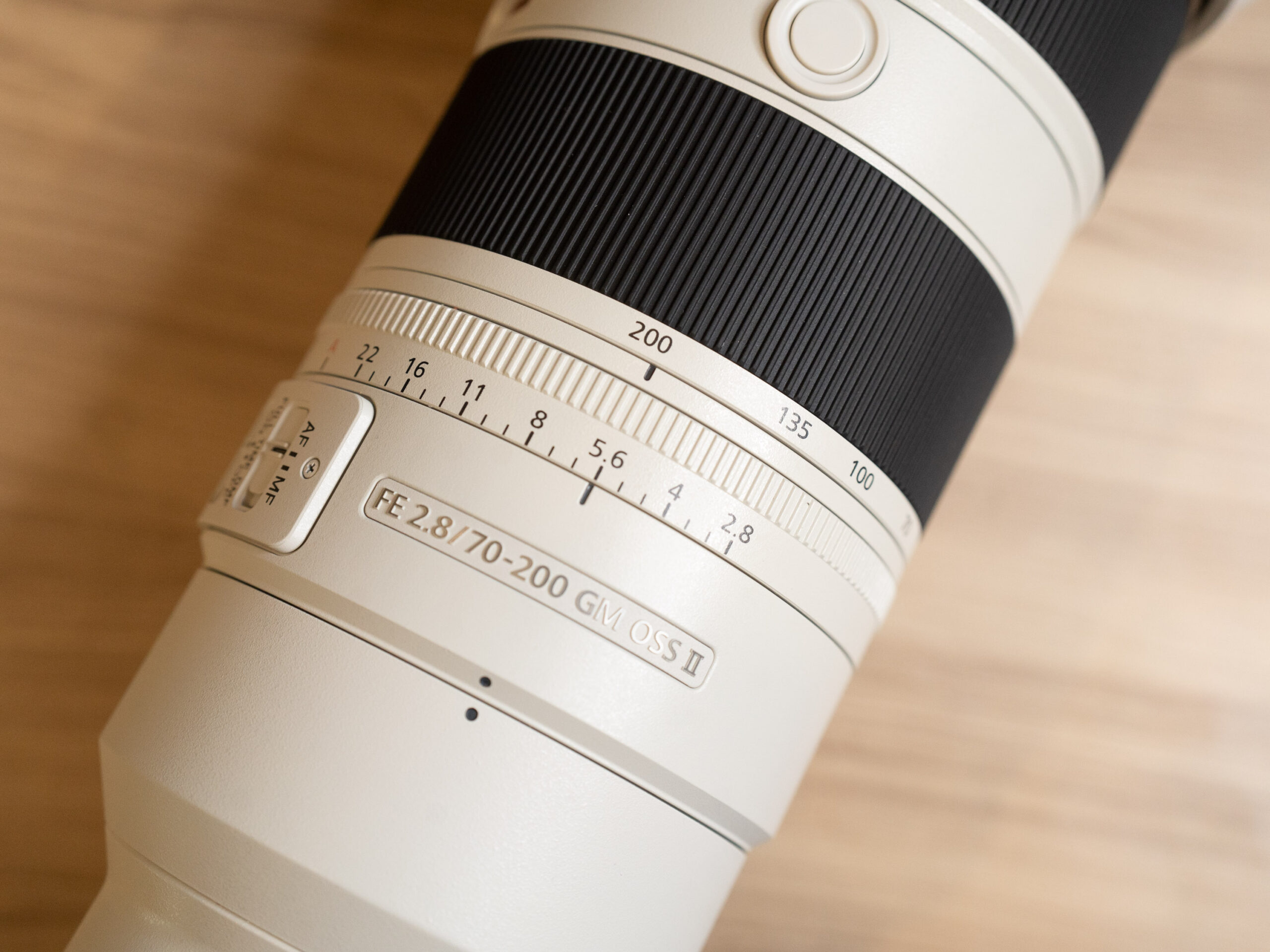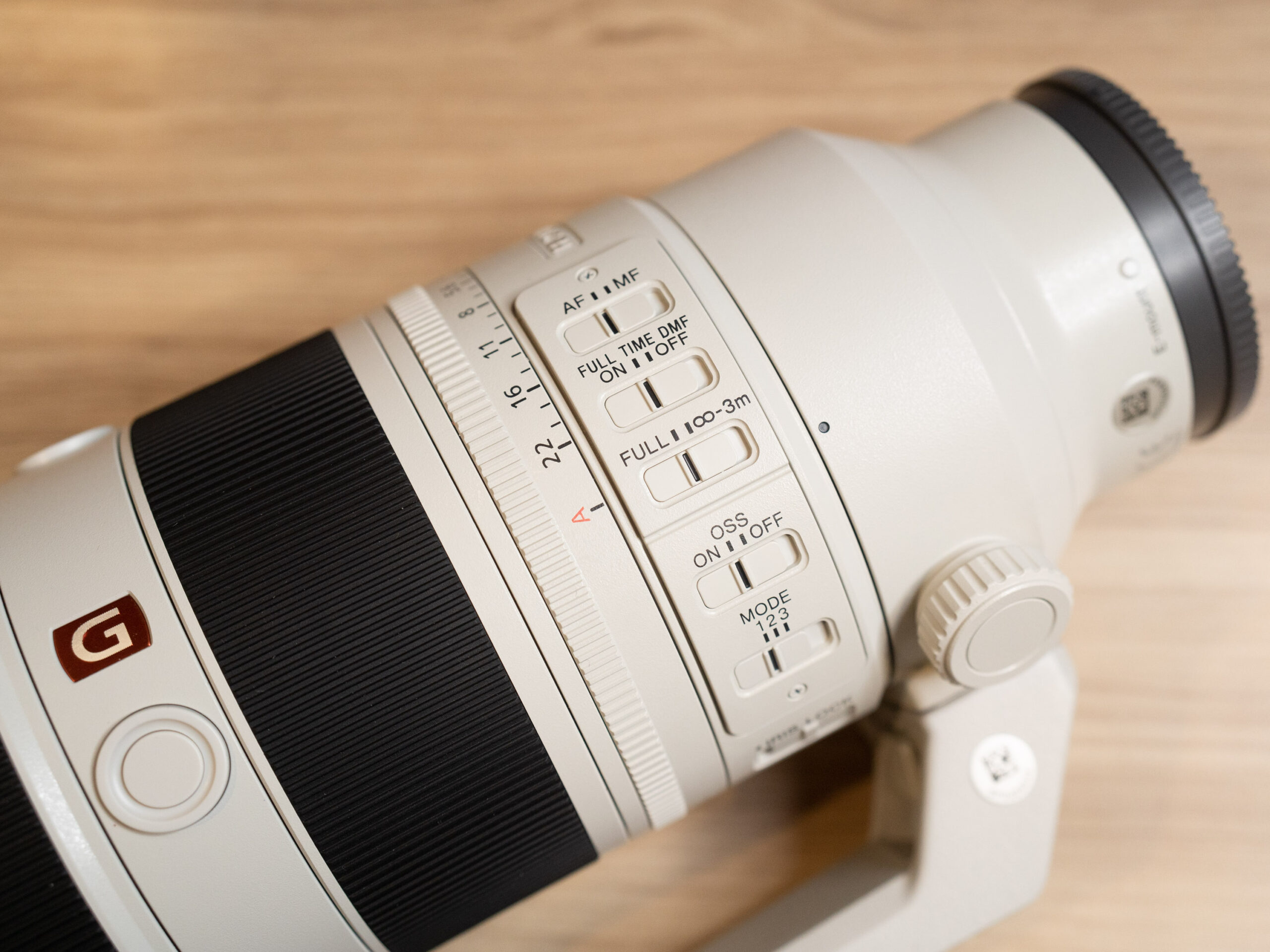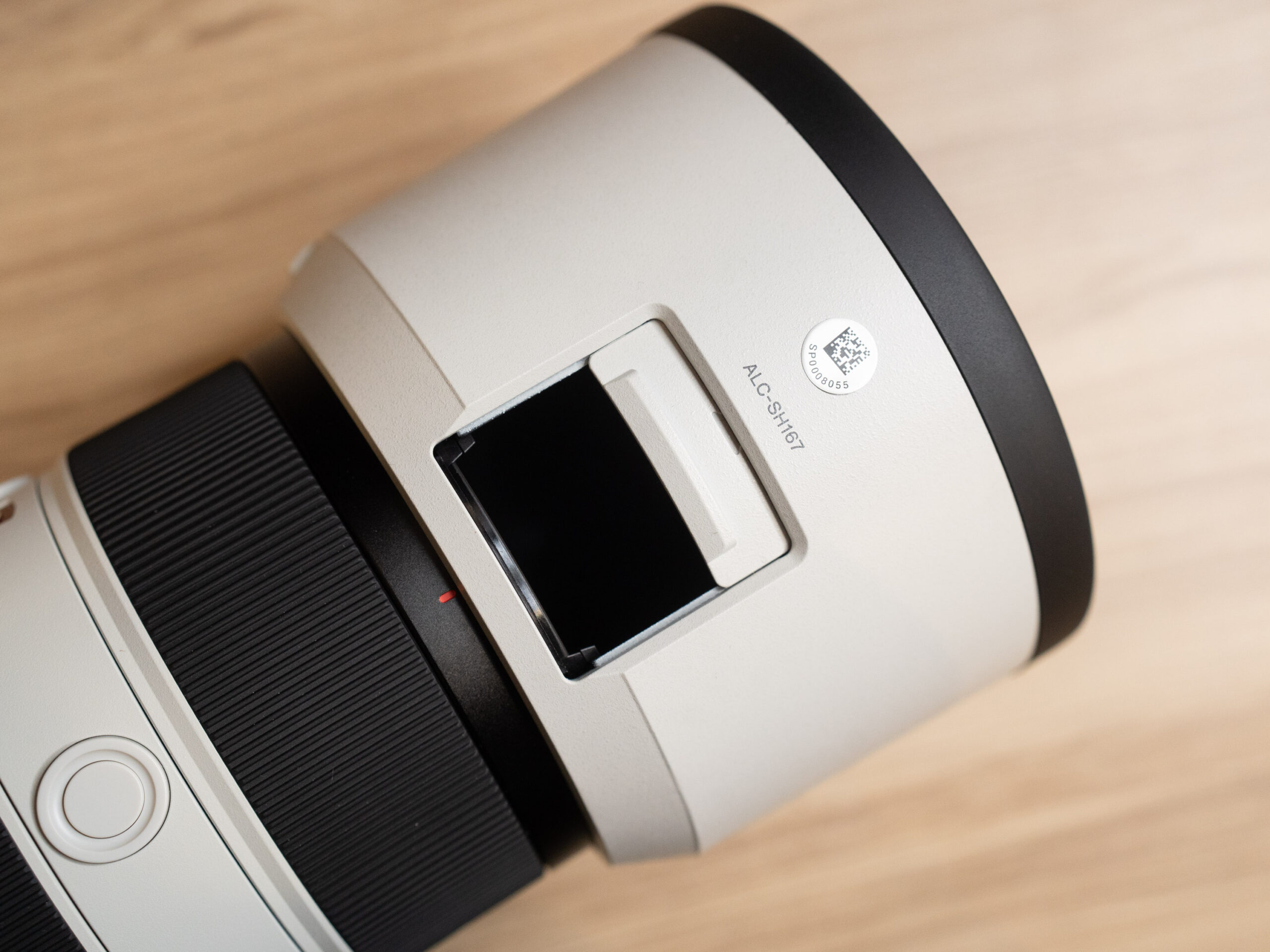
Sony has recently released a brand new version of one of their top telephoto lenses—the FE 70-200mm F2.8 OSS G Master II zoom lens. Before I get into all the functions and upgrades, let me talk you through some of the jargon in that name. As an FE lens, this is designed to work with full frame Sony cameras, like the A9, the A1 or the new A7 IV. The maximum aperture of the lens is 2.8, which is pretty wide for a telephoto lens. This is great for low-light situations, and also for the Bokeh effect, much loved by wedding and portrait photographers. OSS stands for ‘Optical SteadyShot’, which means the lens comes with in-built 5-axis image stabilization, giving you sharper images at lower shutter speeds—also an advantage in low-light situations. G Master lenses are Sony’s highest quality lenses, the best of the best, designed to offer fantastic resolution and absolute reliability.
First impressions of Sony 70-200mm F2.8 GM II lens
High quality telephoto lenses like this one tend to be pretty bulky, especially those with a wide maximum aperture and image stabilization. This new version of the 70-200mm F2.8, however, is surprisingly light (relatively speaking) at around one kilogram, about 30% lighter than the previous model. Photographers love weight savings so this is great news. It comes with a tripod mount so that you can get the center of gravity nicely balanced on your tripod. This mount is optional, so you can take it off if you need to. Build quality is exactly what you would expect from a Sony G Master lens—top notch. Sony has actually updated the dust and moisture resistance to ensure the lens is safe to use even in the most challenging of situations.
New aperture ring
There are a couple of other interesting functional upgrades on the 70-200mm F2.8 that caught my eye right out of the box. The first is the aperture ring, which gives you a super convenient way to change the aperture right there on the lens. By default, the aperture ring moves in stepped increments of one third of a stop, but there is a de-click switch which allows you to change the aperture smoothly, and this is a feature that filmmakers will love. If you are shooting video and you change your aperture by stepped increments, it is really obvious to the viewer—it looks clunky and uncinematic. But with a de-clicked aperture ring you can change the exposure in a much more subtle way which is less distracting to your audience.

Three focus hold buttons
Another new feature is the additional focus hold buttons. There are now three to choose from, spaced at 90 degrees apart, near the front of the lens. These are really handy because you can customize them to any one of a number of different functions. Bear in mind, however, that all three buttons will perform the same function—they cannot be individually customized.
The 70-200mm F2.8 has a number of other adjustable functions, more in fact than any other telephoto lens that I’ve used. You can switch between auto and manual focus, and you can also switch Full Time DMF on or off, which allows you to override the autofocus using the manual focus ring. You can limit the focusing distance to between 3m and infinity if you know your subject will never be less than 3m away, and this basically improves your focus speed. You can switch the image stabilization on and off, which you might care to do if you’re using a stabilizer or gimbal. There is also a mode switch that allows you to choose between three stabilization modes—essentially ‘normal’, ‘panning’ and ‘sports’. The final switch on the lens is the Iris Lock switch, which allows you to lock the aperture ring in the ‘A’ position (where the camera will choose the aperture automatically) or lock it out of the ‘A’ position if you want to always be in charge of choosing the aperture setting.

Updated lens hood
The 70-200mm F2.8 comes with a large and durable lens hood with one very interesting feature that I’ve never seen before: a sliding door. I could not for the life of me figure out what this was for, until I discovered that it is designed to allow access to adjustable filters that you may decide to mount on the front of the lens. Some shooters use adjustable ND filters which essentially reduce the amount of light entering the lens and allow them to shoot at wider apertures and get nice bokeh in sunny situations. You can adjust the strength of the filter by rotating it and this clever little door allows you to do that without taking the lens hood off.

Final thoughts on Sony 70-200mm F2.8 GM II lens
While I’m a big fan of prime lenses, I’m also a firm believer that every serious photographer needs to have a good 70-200mm telephoto lens in their bag. While you will find lenses with a wider focal length range, like 24-240mm for example, these don’t tend to be the best quality lenses, kind of a ‘jack of all trades, master of none’ situation. This lens, however, is unquestionably a master—a G Master! It offers functions and image quality that is second to none. I used it to create some shots for a short film, and I even managed to mount it on my DJI gimbal—no small feat for a lens of this size. One of the surprising features for me was the sensitivity of the focus ring. The speed with which you can get from infinity to the minimum focus distance is really impressive and not something I’ve experienced on a telephoto lens before. You can find the Sony 70-200mm F2.8 G Master II lens at Best Buy.
Bottom line: If this lens is in your budget, I am very confident you will love it and I am happy to wholeheartedly recommend it. Be sure to check out my short film below that I shot with this lens.



